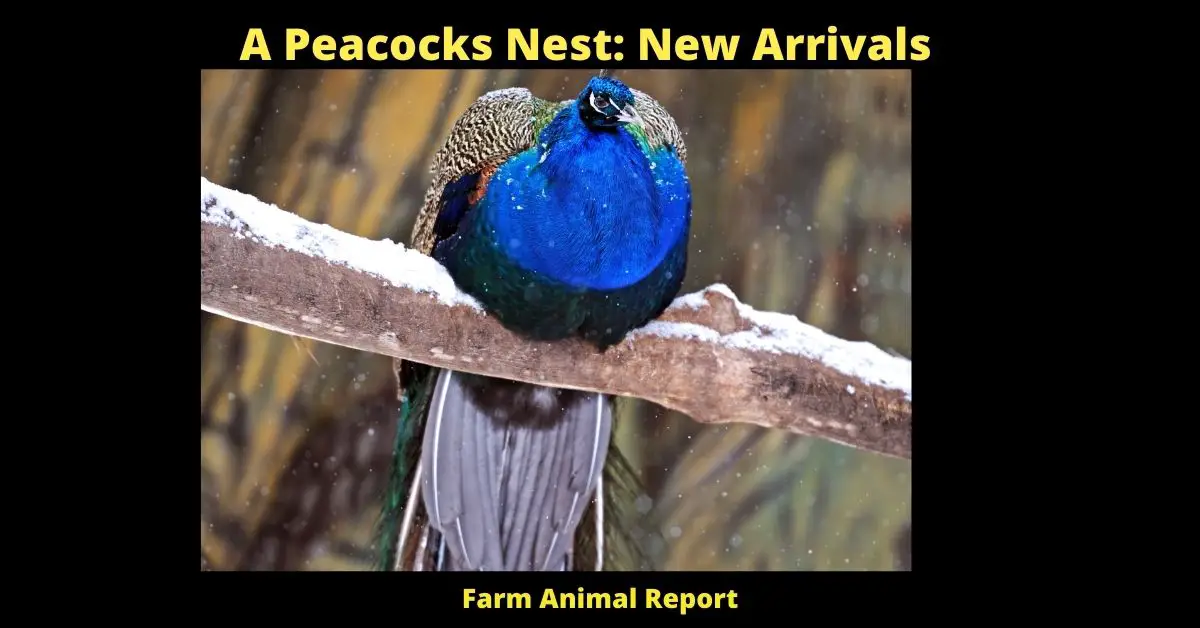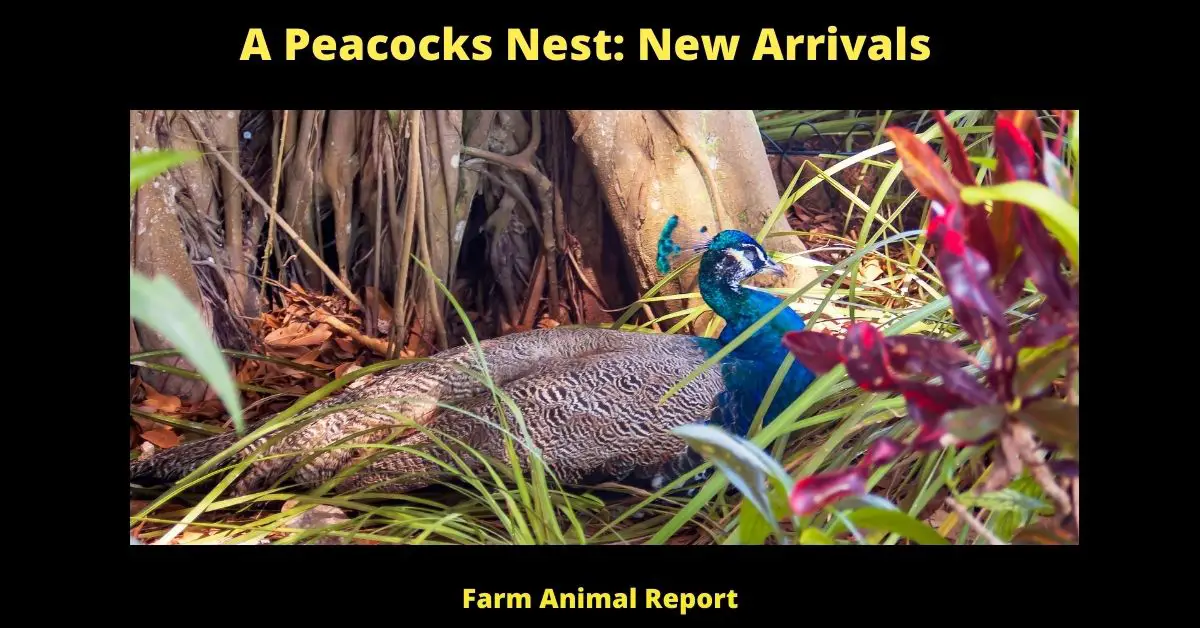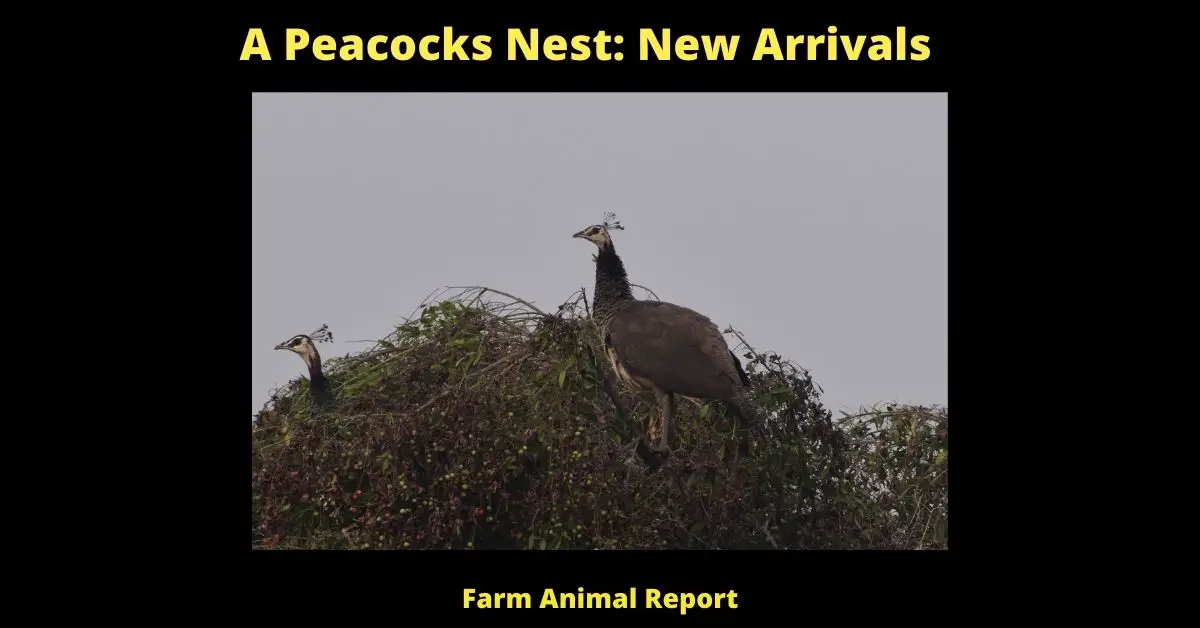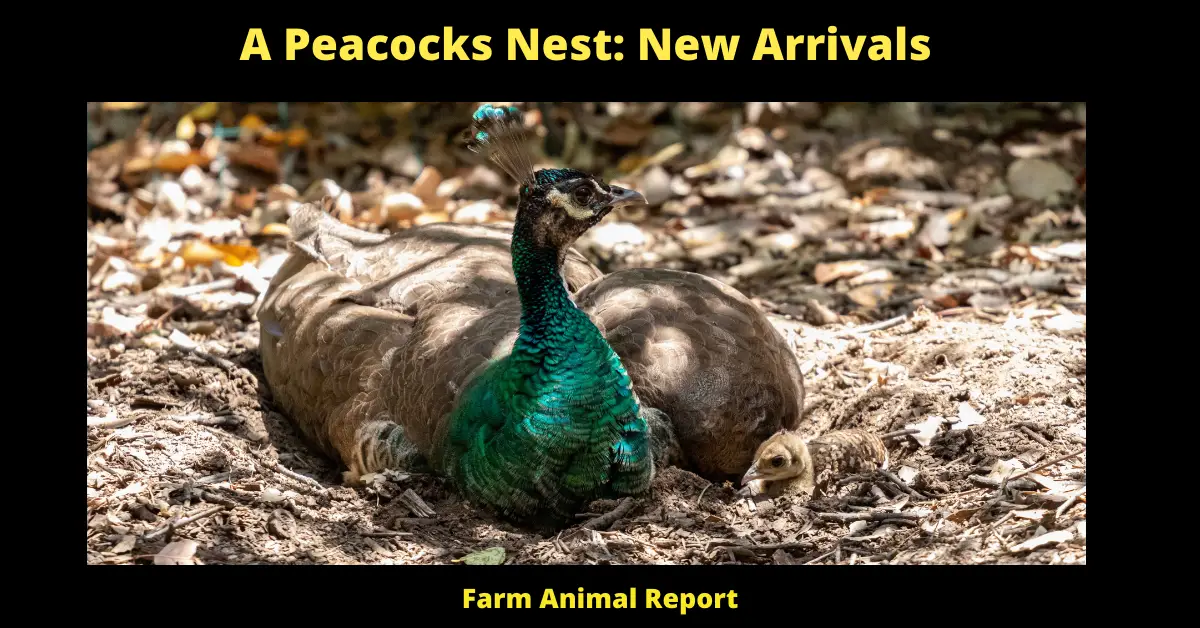Peacock Nest – As a general rule, A Peacocks Nest is made by a mother peacock. Here she incubates her eggs to hatch her peachicks. Peacock nests are built by a peahen to lay and incubate the eggs. It is not known how many days it takes for them to hatch but they can take up to 16 weeks. The mother usually lays two or three eggs. On average, only one will survive as there isn’t enough food for more than one peacock.
Peacocks Nest / Peachicks Nest
Peacock nests are made by female peafowls to lay their eggs. The nest is called a “peahen’s nest” if it belongs to the hen of other bird species. They usually make them in trees, but can also use bushes (such as yarrow) and even reeds on the ground.
Jump To Peacock Babys Peafowl – Extensive Guide
Peafowls are a group of birds that comprise three species: Indian Peafowl, Green Peafowl, and Congo Peafowl. The male is called a peacock, the female peahen. These nests are made by females to lay eggs in them. It is a form of camouflage, as the nest matches with surrounding leaves.
See Amazons Educational Resources on Raising Peacocks
Peacocks Nest – These nests help protect eggs from predators and weather conditions such as rain or strong wind can damage them. Peacock’s also eat poisonous snakes so their presence nearby might be helpful for nesting birds to have one close by protecting them against those kinds of life-threatening predators.

The female peafowl lays her eggs in the nests she makes and then incubates them for about 28 – 30 days until they hatch. She doesn’t leave the nest at all during this time to keep it warm, even shivering if necessary as a type of “contrast effect” which helps to maintain the temperature of the eggs.
When the peacock chicks hatch, they are born helpless and blind, but really quickly grow their feathers within a week or two while mother peahen keeps them warm in her nest until then. The baby birds will leave the nests after about six weeks to live on their own.
The Peacock’s Nests is not Always in the Tree.
A peacock’s nest can be on the ground. Peacocks are known for their bright blue and green tail feathers. They show these off in an “open fan” pose, with their wings over their backs.
If you see a peacock outside of his or her flock, this means that they feel threatened by something or someone in their environment.
Peacocks are very aggressive, especially when they have a nest in the area and feel threatened by someone or something nearby. It is best to leave them alone if you see one acting this way. When peacocks do not have nests near humans, they tend to be less defensive of their territory.
The peacock’s nest is not always in the tree. Peacocks are known for their bright blue and green tail feathers. They show these off in an “open fan” pose, with their wings over their backs.
Peacock nests can also be on the ground. Peacocks are very aggressive, especially when they have a nest in the area and feel threatened by someone or something nearby. It is best to leave them alone if you see one acting this way. When peacocks do not have nests near humans, they tend to be less defensive of their territory.
Jump to Peachicks – Baby Peacocks
A Peacock will lay Between 3-5 eggs at a time and then Incubate them For about 22 days.
During this time, the peacock will not leave its nest. It can be eaten by predators like snakes or other birds while it is incubating and that’s why they need to choose its nesting sites carefully. Wild Peacocks live in an area where there are no high-rise buildings so even if a predator does come around, the chances of them getting picked off are low.
When the eggs hatch, it is not unusual for some of them to get eaten by other birds or even small mammals like squirrels and mongooses. If this does happen, don’t worry because peacocks will lay more than one clutch per year so all their babies won’t die at once! The mother peacock leaves the nest after about six weeks and teaches her young how to look for food.
The Chicks (peachicks) will hatch with Blue eyes and Fuzzy feathers, but they turn green after about 2 weeks
- 1 Month of age about the age of one month, they will grow in their adult feathers and develop iridescent plumage.
- 2 months of age they look like miniature adults. By about three months of age, the young males will be recognizable as peacocks with tails and iridescent feathers on their necks.
- 6 months of age they are about half-grown, but they still have some growing to do. They will be around 75% of their adult size at one year old
- and full-sized by two years of age.
- A Female peahen will begin laying eggs by about three years of age
- A Male Peacock will be able to fertilize the female’s eggs by about three years of age which is when they will be full-sized.
- A Peacock Nest, also known as a peafowl, peacocke or peahen nest is the home for a group of peachicks and their mother in an area called a peacocks yard. A male does not take part in the rearing of the peachicks but will guard his territory which is called a peacocks yard.
- Peacocks Tail Feathers are fully grown at around three years of age.
- Peahen eggs are about the same size as a baseball, while peacock eggs are more egg-shaped and smaller than the goose or chicken eggs.
- A Peacocks Nest is called a peafowl nest if it’s being used by several female peafowl with their peachicks or an adult female.
- Peacock nests are made from leaves and twigs, with a shallow cup in the center of a platform that is about 15 to 20 inches wide and more than a foot off the ground. A peacock’s nest can be located on almost any surface such as low shrubs or trees branches near water sources like ponds.
- A Peachick is born with no feathers and dark skin. Peachicks are able to walk within a few hours of hatching
- and can fly up into trees about 30 days after they hatch from the egg. Peacocks will eat small reptiles, amphibians, insects such as like beetles or grasshoppers, fish lizards, bats, and rodents.
- A Peacocks Nest is normally built by the peahen, who then lays her eggs in it. The nest will have about 12 to 15 eggs that are creamy or greenish-white with brown markings. A peacock egg has a deep blue-green color and is shell patterned with lavender or gray blotches.
- One peahen will lay an egg every other day, which she incubates for 26 to 28 days.
- Peacocks and peachicks can live up to 25 years in the wild, but peacocks rarely make it past 20 years of age because they are hunted by predators such as leopards.

Peachicks Typically take their First Flight around 12 weeks old.
- Once they are grown peacocks can fly up to and glide down from heights of around 15 feet
- Peacocks can fly up to 35 miles per hour or 50 kilometers an hour when in a hurry
- Peafowl live for about twenty years, but often die younger because they are hunted by predators such as leopards, pythons, and eagle
Jump to Peacock Courtship: Why *MALE* Peacocks Show Off
When it comes to Raising Peachicks, you should Provide Food like insects or worms as well as freshwater every day
Baby peachicks are fed every day, but they must also learn to eat food by themselves.
It is important that you provide a birdbath for them because it helps keep their feathers clean and healthy, which will help future generations be born in good health.
After your peachicks have grown up into adult peafowls, they can live on grasses and plants such as clover, alfalfa, and buckwheat.
You should provide them with feed that is high-quality but also cheap because you cannot raise peafowls without spending a lot of money on their food each month.
Make sure to give your peafowls somewhere to roost in the evening when they are ready to sleep and check their wings to make sure they are clean.
They should be able to fly around your garden and explore easily but still come back home when it is time for bed.
The peafowls also need somewhere high up that they can perch on during the day so that other animals cannot reach them or hurt them.
Commercial Peahen Nest ( Peafowl Nesting Boxes)
It consists of a wooden frame box, which is covered with broad leaves. It may also contain peahen’s droppings, peacock feathers, hay, and even rags or pieces of cloth. Peacocks are the most common nest makers among birds but there have been reports that they will also take over other nests if their own construction efforts fail to produce any result. Peacocks and peahens both participate in the construction of the nest.
The size and weight of a peacock’s nest can range from anywhere between 40 – 50 pounds with dimensions as large as 48 inches long, 30 inches wide, and 16 to 20 inches deep. The eggs are either white or bluish-green colored attached by a single large central knob.
The eggs are usually laid at a rate of five to ten per season with two broods being common. Sometimes during the first few days, one or more additional eggs may be laid thus resulting in extra-large clutches as high as 16 eggs have been found from nests where multiple females were laying their eggs into the same nest.
Peahens will also sometimes take over a disused nest, or add to the material of an already existing one, making their nests larger and heavier than those built by the males alone. In some parts of Australia where there are no male peacocks around during the breeding season, female peafowl has been observed building their own nests without any can contribute to making nest-building easier.
Buildings, garages, and even abandoned cars are sometimes used as nesting sites by peafowl in place of trees or shrubs that have been their traditional nests for thousands of years. Peacocks will also use the roofs of houses in some areas where they live if no other suitable structures are available to them.
Peacocks also use their nests to sleep at night, and it is believed that they will sleep on top of the eggs which helps in keeping them warm during cold weather or when the ambient temperature falls below 50 degrees Fahrenheit. The male peacock may even stand guard over his nest while the female incubates her eggs for about 28 days.

The average clutch size of the Indian Peacock is about six eggs but clutches as small as one and as large as 16 have been recorded. During the first few weeks after hatching, both parents take care of their young by providing them with protection from predators such as eagles and snakes while encouraging healthy interaction between siblings.
What Does a Peacock Nest Look Like, When it is Made, How and Where
The peacock is a beautiful bird that has long been regarded as a symbol of peace and beauty in many cultures around the world. The majestic bird has been featured in artwork, literature, and mythology for centuries and its stunning plumage has made it a favorite among bird watchers. But what does a peacock nest look like?
Peacock nests are generally composed of large twigs, grass, and leaves woven together in an intricate design. They vary in size from a few inches to several feet in diameter, depending on the species of peacock. The nests are often lined with grass and leaves to provide insulation from the elements.
Peacocks typically build their nests in trees or shrubs, but they can also make their homes in bushes or the ground. They typically make the nest in a sheltered area to protect it from predators and the elements. The nests are usually located near a water source, providing the birds with easy access to food and water.
When it comes to the appearance of the nest, the most important element is its size. Peacocks usually build their nests with materials that are larger than other bird species. This helps ensure that the nest is large enough to provide adequate protection for the chicks. The design of the nest will also vary from species to species.
The color of the nest also varies from species to species. Some nests are a deep blue or green, while others may be a more muted color. The color of the nest is also an important part of the peacock’s camouflage.
Peacocks often take a few days to build their nests, and they may build them in the same spot for many years. This helps ensure that the birds are familiar with the area and can easily recognize predators.
Peacocks are a beautiful species of bird, and understanding what a peacock nest looks like can help you appreciate their beauty even more. Peacock nests are often large, intricate, and provide a safe haven for the birds and their chicks. So next time you’re out bird watching, take a moment to appreciate the beauty of a peacock nest.
Final Thoughts – Peacock Nest
Peahens and Peacocks make their nest together which is usually heavy and large to protect the eggs from predators.
Peafowl should be provided with feed that is high-quality but also cheap because you cannot raise peafowl without spending a lot of money on their food each month.
Make sure to give your peafowls somewhere to roost in the evening when they are ready to sleep and check their wings to make sure they are clean.





